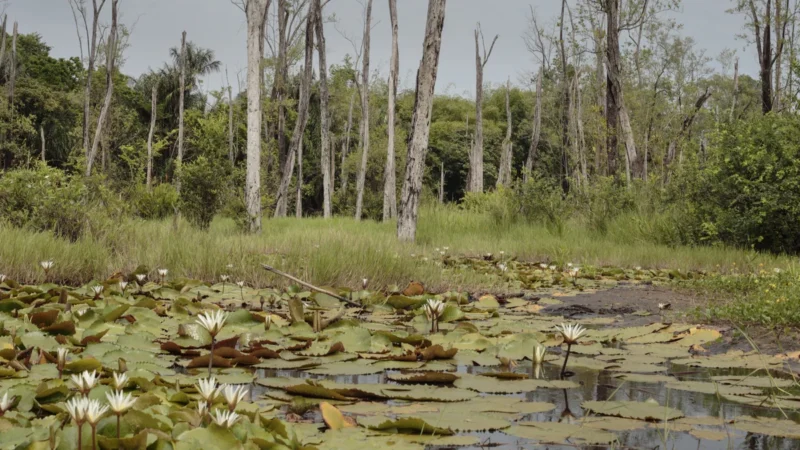Carbon and Climate: 34 Things to Know about Carbon and Climate

34 Things to Know about Carbon and Climate” is a course offered by Seth Godin, a renowned author, entrepreneur, and public speaker. The course covers more than 30 important points from the Carbon Almanac, a thoroughly annotated resource compiled by 1900 people across 91 countries.
1. Carbon Cycle Basics
The carbon cycle is the continuous movement of carbon through the atmosphere, oceans, biosphere, and geosphere.
2. Carbon as an Elemental Building Block
Carbon is a fundamental element of life, forming the basis of all organic compounds essential for living organisms.
3. Greenhouse Gases and Climate
Carbon dioxide (CO2) is a prominent greenhouse gas that traps heat in the atmosphere, contributing to global warming and climate change.
4. Human Impact
Human activities, notably burning fossil fuels and deforestation, have significantly increased the concentration of CO2 in the atmosphere.
5. Ocean’s Role
The world’s oceans act as a substantial carbon sink, absorbing CO2 from the atmosphere, regulating the climate.
6. Climate Feedback Loops
As temperatures rise, feedback loops can intensify climate change by releasing more stored carbon into the atmosphere.
7. Methane Emissions
Methane, another potent greenhouse gas, originates from various sources such as agriculture, landfills, and natural gas extraction.
8. Carbon Sequestration
Natural and artificial processes capture and store carbon, mitigating its impact on the climate.
9. Carbon Offsetting
Initiatives and projects designed to compensate for carbon emissions through actions like reforestation or investment in renewable energy.
10. Carbon Footprint
The total amount of greenhouse gases emitted directly or indirectly by human activities.
11. Carbon Neutrality
Balancing the release of carbon emissions with actions that remove an equivalent amount of carbon from the atmosphere.
12. Paris Agreement
A global effort among nations to combat climate change by limiting global warming to well below 2 degrees Celsius above pre-industrial levels.
13. Carbon Pricing
Economic policies that put a price on carbon emissions to incentivize reduction efforts.
14. Carbon Capture and Storage (CCS)
Technology designed to capture CO2 emissions from industrial sources and store it underground to prevent its release into the atmosphere.
15. Biosequestration
The capture and storage of carbon through natural processes, such as reforestation and soil carbon sequestration.
16. Renewable Energy Solutions
Transitioning to renewable energy sources like solar, wind, and hydroelectric power can significantly reduce carbon emissions.
17. Deforestation and Land Use
Reducing deforestation and better land management practices are critical to curbing carbon emissions.
18. Climate Models
Sophisticated computer models are used to simulate future climate scenarios, aiding in understanding and predicting climate change.
19. Climate Justice
Recognizing that the impacts of climate change are not equally distributed and disproportionately affect vulnerable communities.
20. Carbon Markets
Systems where companies can buy and sell carbon credits, encouraging emission reduction.
21. Carbon-Intensive Industries
Certain industries like aviation, cement, and steel production have high carbon footprints, necessitating focused efforts for decarbonization.
22. Corporate Social Responsibility
Many companies are adopting sustainability practices, reducing their carbon footprints, and investing in environmentally friendly strategies.
23. Climate Refugees
Rising sea levels, extreme weather, and changing climates force people to migrate, creating climate-induced displacement.
24. Climate Adaptation
Adapting to the changing climate by implementing strategies to reduce vulnerability and build resilience.
25. Carbon Nanotubes
These structures made of carbon have diverse applications in technology, materials, and medicine.
26. Regenerative Agriculture
Farming practices that restore soil health and help sequester carbon.
27. Carbon Tax
A tax on carbon emissions, aiming to reduce their use and combat climate change.
28. The Keeling Curve
A graph illustrating the long-term increase of atmospheric carbon dioxide concentrations.
29. Climate Diplomacy
International efforts and negotiations to address climate change and foster cooperation among nations.
30. Carbon Farming
Agricultural techniques that reduce greenhouse gas emissions or capture and store carbon.
31. Carbon Leakage
The migration of carbon-intensive industries to locations with fewer environmental regulations, potentially increasing global emissions.
32. Carbon Neutrality Pledges
Companies, cities, and countries commit to achieving carbon neutrality within a specific timeframe.
33. Technological Innovations
Advancements in technology play a significant role in combating climate change, offering solutions for cleaner energy and efficient carbon capture.
34. Individual Action
Individual efforts in reducing personal carbon footprints through lifestyle changes, consumption habits, and advocacy are crucial in the fight against climate change.
The interaction between carbon and climate remains a pivotal topic in addressing the global challenge of climate change. Understanding these 34 facets is key to driving change, from policy-level interventions to individual actions, collectively working towards a sustainable future.


